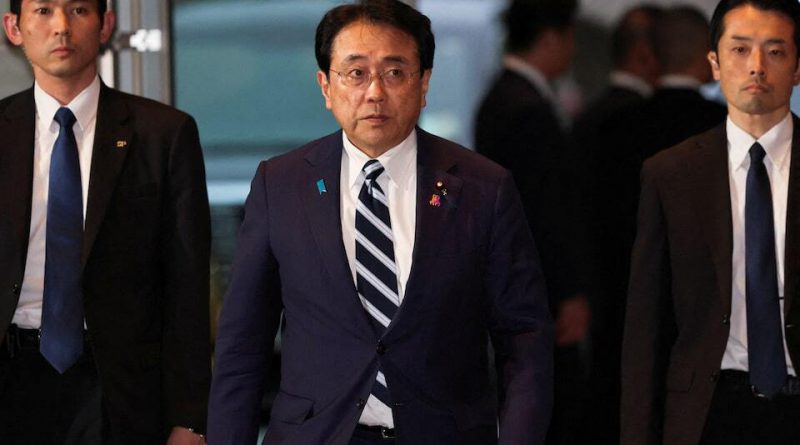Nuclear Power at the Heart of Japan’s Energy Revival Under New PM Takaichi
Tokyo – Japan’s newly elected Prime Minister Sanae Takaichi is taking decisive steps to transform the country’s energy landscape, putting nuclear power and energy security at the core of her administration’s economic revival strategy.
With energy prices driving inflation and burdening households, Takaichi’s policies aim to balance economic stability, environmental responsibility, and national resilience.
A Pro-Nuclear Vision for a Sustainable Future
Takaichi, known for her pragmatic and forward-looking approach, has long been an advocate of nuclear energy and next-generation fusion technology.
Her leadership signals a major push toward reviving Japan’s nuclear fleet, which she views as essential for cutting fuel import costs, reducing carbon emissions, and achieving long-term energy independence.
Following the Fukushima disaster in 2011, Japan’s nuclear sector saw years of hesitation and slow restarts. Of the 54 reactors previously in operation, only 33 remain technically operable, and just 14 have been restarted so far.
Takaichi’s government plans to accelerate the approval process for safe reactors, ensuring compliance with strict safety standards and community engagement.
“We aim to proceed with nuclear restarts while taking concrete steps to gain the necessary understanding of local communities and stakeholders,” said Ryosei Akazawa, Japan’s newly appointed Minister for Economy, Trade, and Industry.
Strengthening Ties with the U.S.
Takaichi’s appointment of Akazawa, a fluent English speaker and experienced negotiator of Japan-U.S. trade agreements, highlights her commitment to strong international cooperation, especially with Washington. Analysts see this as a sign that Japan will continue deepening energy and trade relations with the U.S.
Her government is preparing an energy package to present during U.S. President Donald Trump’s visit to Tokyo next week. The package includes additional liquefied natural gas (LNG) purchases from American suppliers, demonstrating Japan’s willingness to diversify energy sources while maintaining economic diplomacy.
However, Tokyo remains cautious about committing to the $44-billion Alaska LNG project, preferring a balanced approach that avoids overreliance on any single source.
Tackling Inflation Through Energy Reform
Japan spent an estimated 10.7 trillion yen ($71 billion) last year on imported LNG and coal — around 10% of the country’s total import costs. With 60% to 70% of Japan’s electricity generated from imported fossil fuels, energy prices have been a key driver of inflation and public frustration.
By restarting nuclear reactors and investing in domestic technologies, the Takaichi administration hopes to stabilize energy prices, cut emissions, and boost industrial productivity.
Lower electricity costs could ease pressure on both households and small businesses while supporting the competitiveness of Japanese manufacturing and data-driven industries.
Embracing Innovation and Energy Diversification
While nuclear power remains central to her strategy, Takaichi also emphasizes technological innovation and energy diversification.
She supports the development of perovskite solar cells, an emerging Japanese innovation that could redefine solar energy efficiency and become a valuable export technology.
However, she has expressed skepticism toward massive solar and wind projects, especially those dependent on imported Chinese components.
Instead, she aims to promote smaller-scale, domestically developed renewable technologies that align with Japan’s economic and environmental goals.
Industry analysts note that her approach could shift investment focus toward homegrown innovations, such as advanced nuclear and fusion technologies, which could make Japan a leader in clean, reliable energy.
A Balanced and Future-Oriented Energy Policy
Takaichi’s energy agenda reflects a balanced vision—one that acknowledges the importance of renewables but prioritizes energy reliability and national security.
Her stance on nuclear restarts is supported by many experts who argue that Japan cannot meet its decarbonization and affordability goals without restoring its nuclear capacity.
“Prime Minister Takaichi will almost certainly push for a more ambitious nuclear reactor relaunch,” said Henning Gloystein, managing director at Eurasia Group. “This will help bring down power prices while reducing dependence on imported fuels.”
As Japan faces growing energy demands from data centers, industry expansion, and climate goals, the Takaichi administration’s policies mark a turning point.
By combining nuclear innovation, international cooperation, and domestic research, Japan is positioning itself for a sustainable, secure, and economically vibrant energy future.
In the years ahead, Takaichi’s leadership may restore public confidence in nuclear technology and reaffirm Japan’s global role as a clean-energy pioneer—proving that a nation once scarred by disaster can emerge stronger, safer, and more self-reliant through bold, science-driven reform.



